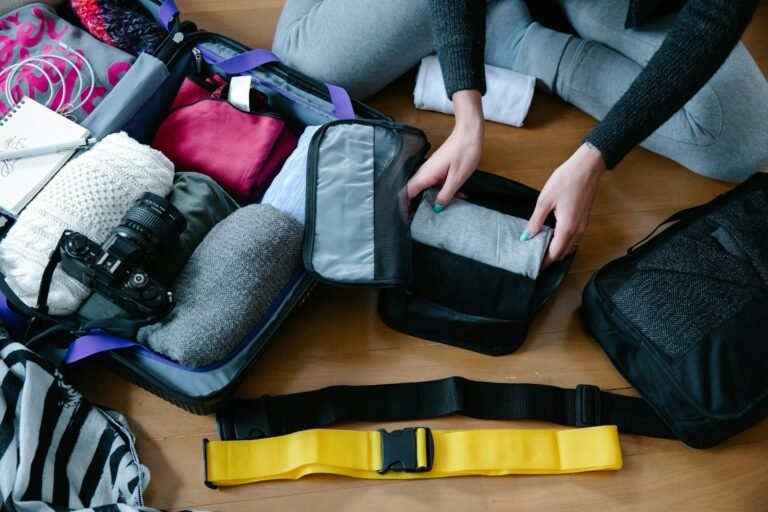What if the fastest way to a free beach getaway wasn’t points or coupons? But a simple shift in how you use travel incentives trusted by small businesses?
I’ve used vacation incentives to stretch my budget and unlock trips I wouldn’t have afforded. I’ve seen lean teams and local agencies do the same. They use effective marketing without big budget tools and premium marketing incentives that actually move the needle.
Incentive travel started as a reward for top performers at companies like Google and Salesforce. Today, it powers motivation, engagement, and sales across small firms too. The Incentive Research Foundation reports that 80% of employees find group travel highly motivating. The Society for Incentive Travel Excellence notes that 80% of companies credit these programs with higher sales or profits. That’s hard to ignore.
Many of us underuse paid time off, so a structured free trip feels rare and valuable. Blend business and leisure—bleisure—and satisfaction climbs. With smart planning, group rates, and off-season timing, these programs deliver ROI while keeping costs lean. Platforms like TravelPerk and Navan make booking, budgets, and safety simple, which is why they’re trusted by small businesses.
In this guide, I’ll show you how to spot credible providers, stack savings, and turn travel incentives into real trips—no fluff, just clear steps that work.

Quick Recap
- Free trips are real when you use vacation incentives backed by clear terms and solid reviews.
- Bleisure time boosts satisfaction and ROI, specially for small teams.
- Use off-season windows and group rates for effective marketing without big budget.
- Premium marketing incentives can lift engagement, sales, and retention.
- Platforms like TravelPerk and Navan streamline booking, costs, and safety.
- Focus on programs trusted by small businesses to avoid blackout-date traps.
- Set goals, track results, and reinvest in the travel incentives that perform.
What Trusted Travel Incentive Programs Are and Why They Work
I’ve run many campaigns, and I’ve seen the power of travel incentives. When I offer exclusive rewards and set clear goals, I see fast sign-ups and high close rates. These programs not only boost sales but also engage customers in a meaningful way.
Great programs have simple rules, fair terms, and real trips. I focus on experiences that connect people, with flexible travel and amazing destinations. This turns rewards into unforgettable moments.
Experiential rewards beat cash for lasting motivation
Cash may fade, but memories last. The Incentive Research Foundation says 80% of employees find group travel incentives very motivating. It beats other rewards like plaques and gift cards.
- Experiences create stories people share at work and home.
- Shared travel incentives boost team energy long after payday.
- Exclusive customer rewards turn routine offers into moments worth sharing.
Brands add trips to incentive programs to boost sales. This leads to faster pipeline growth and stronger referrals.
How employee recognition trips evolved into consumer and partner rewards
Corporate programs started with trips for top performers. Think Google sales clubs or Salesforce President’s Club. Leaders saw the same spark with customers and partners, too.
- Partner contests tied to travel incentives drive joint marketing hustle.
- Consumer promos with exclusive customer rewards raise response rates.
- Breakthrough customer engagement strategies turn one-time buyers into fans.
What started as recognition now fuels various campaigns. It’s used in launch campaigns, loyalty pushes, and co-op sales efforts across industries.
Psychology of exclusivity, status, and shared memories
People value access and belonging. Earning a spot signals status; traveling together builds bonds. Many workers prize time and flexibility as much as money, and a surprising share leave vacation days unused. Curated trips close that gap.
- Exclusivity heightens perceived value and effort.
- Status validates achievement in a public, positive way.
- Shared memories anchor loyalty and repeat behavior.
When I include free time, cultural moments, and light structure, the effect multiplies. That’s the core of travel incentives done right. They remain reliable programs to boost sales and deliver breakthrough customer engagement through exclusive rewards.
Benefits That Make Free Vacations a Smart, Cost-Effective Marketing Play
I’ve compared free vacation promos to discounts, and free trips win. They work well with clear goals and terms. They’re smart because they reward actions, not just views.
Motivation, productivity, and sales lift supported by industry studies
The SITE Index shows that incentive travel boosts sales and profits. The IRF also notes its strong motivational effect. People work harder for experiences they can share.
- Link rewards to a purchase threshold, referral, or renewal to pay only for performance.
- Blend team-building with leisure to spark engagement and post-trip reviews.
- Use corporate travel platforms to negotiate rates and control expenses.
Programs that support retention also reduce turnover costs. This frees up budget to attract leads without more ad spending. It keeps morale high too.
Customer loyalty incentives that work for small businesses
Local shops and startups can use free hotel certificates as rewards. This works well with off-season dates or group blocks. It’s cost-effective.
- Set simple rules: buy X, get a two-night stay; refer a friend, earn a resort weeknight.
- Track KPIs—sales growth, engagement, retention—to prove ROI and refine offers.
- Look to research-backed guidance, like this primer on rewarding customers with travel incentives, to shape your plan.
I prefer experiences over cash because they feel special and get talked about. This buzz helps attract leads without more ad spending.
How to increase sales without spending more on ads
Start with a clear goal and a capped budget. Tie rewards to actions that boost revenue. This way, you can increase sales without more ad spending.
- Negotiate off-peak inventory with hotels and use group blocks for rate leverage.
- Trigger rewards only after the desired action to protect margins.
- Promote through owned channels—email, SMS, and receipts—to cut media costs.
As adoption grows, scale with phased tiers and waitlists. This keeps demand high and saves on marketing costs.
travel incentives
I reward clear actions with travel incentives. This could be hitting a sales goal, renewing a contract, or sending a referral. The idea is to offer an experience that feels special without costing too much.
People love taking breaks, but often don’t. So, a well-planned trip is a big deal.
I’ve offered free hotel nights with just taxes and fees to pay. I’ve also paired off-season resort stays with short trips for more value. These rewards feel earned and personal.
Studies show travel incentives boost motivation, productivity, and sales. I’ve seen it myself, with stronger loyalty and retention. That’s why I call them premium marketing incentives, not just free stuff.
- Set objectives tied to revenue or engagement.
- Know the audience—relaxation, adventure, or culture.
- Budget with group rates and off‑peak windows.
- Design balanced itineraries with downtime.
- Measure outcomes and survey participants.
For bigger groups, I use TravelPerk or Navan for booking and safety. Clear rules make it easy to redeem rewards. Adding bleisure options also boosts satisfaction without breaking the bank.
To keep things exciting, I mix travel incentives with new ways to get leads. A special reward for a demo or event RSVP can get people moving quickly. Used wisely, these incentives feel generous, build trust, and guide people to the next step.
How to Identify Programs Trusted by Small Businesses
I look at incentive platforms like airlines and hotels. I read reviews, ask for samples, and check the details. My goal is to market well without spending too much. I choose providers that small businesses trust and act as reliable partners.

Tools like Navan and TravelPerk are clear about costs, booking, and support. This clarity helps avoid surprises and keeps costs steady. It’s a smart way to market affordably.
Red flags vs. green flags when vetting providers
- Green flags: clear pricing, easy booking, and quick support. I also look for flexibility and fair swap policies.
- Red flags: unclear “free” offers, hidden fees, hard-to-reach support, and tricky fine print. These can block rewards for most travelers.
Transparency on fees, blackout dates, and redemption terms
I ask for a simple summary of all costs and booking rules. I want clear info on blackout dates and available dates. This clarity makes marketing without big budget worries possible.
- Confirm total trip costs before issuance.
- Verify refund or replacement rules if dates vanish.
- Test the booking flow on mobile and desktop.
For more context on outcomes from recognition-driven travel, I like this overview of company incentive programs. It shows how clear structures boost engagement and retention.
Why “trusted by small businesses” and reviews matter
Claims need proof. I look at case studies and third-party ratings. I also talk to users to check service quality. Trusted vendors offer fast support and reliable partners for smooth marketing.
Before committing, I test with a small offer. If support is quick and redemption is easy, I know I’ve found a good deal.
Top Ways to Actually Score Free Vacations with Incentive Certificates
I’ve used travel incentives certificates for years. The key is knowing what to expect and when. By combining them with special offers and rewards, we save money without spending too much. It’s all about setting clear goals, choosing the right time, and keeping track of how well it works.
Travel incentives certificates: what they include and exclude
Most certificates cover the cost of a room at certain hotels or places. But, you’ll have to pay for taxes, fees, and booking costs. This way, you know exactly what you’re getting, just like with promotions from TravelPerk and Marriott.
I make sure to share all the details upfront. This builds trust and makes people more likely to use the offer. I also tailor the offer to different types of travelers, like beach lovers or adventure seekers, to make it feel more personal.
Unlocking complimentary hotel stays with minimal taxes/fees
To get the most value, I look for deals during the off-season. This is when hotels have more rooms and prices are lower. Using a free-night voucher during these times can make for a great vacation at a low cost.
- I always clearly state any extra fees to avoid surprises.
- I offer extra perks like better rooms or late checkouts.
- I track how well the offer does to see if it’s worth it.
This approach keeps the program effective and profitable.
Stacking with off‑season and group-rate strategies
By combining offers, we can get even more value. For example, I might pair a free night with a discounted second night. Or, I might add extras like airport transfers or a day of work and play. This way, we can get rates similar to what big companies get through TravelPerk.
- I stack travel incentives with group rates to get better deals.
- I choose destinations that fit what my audience likes to increase use.
- I use special rewards as milestones, like for purchases or referrals.
Doing it this way keeps the offers exciting and encourages people to come back. It’s a smart way to save money and grow your marketing efforts without breaking the bank.
Marketing Boost, Marketingboost, and Similar Platforms Explained
I’ve tried many travel-incentive platforms to find the best for small teams. They promise to use hotel certificates to boost action while keeping costs low. I watch how these tools work, match them to my audience, and track their impact on signups and sales.
Before starting, it’s key to understand what “free” really means. You need to know where the inventory is and how guests can use it. It’s also important to check if the brand names match. Marketing boost and boost marketing are different from marketingboost. Choosing the right one helps keep your campaign focused.

marketing boost login and core features for vacation incentives
When I log in to marketing boost, I look for tools that make it easy to offer and track incentives. I want features like ready-to-use hotel certificates, clear calendars, and estimates for taxes and fees. It’s also important to have CRM integrations and quick promo templates to avoid abuse.
- Transparent terms: taxes, resort fees, and eligible cities listed upfront.
- Simple redemption: clear steps, mobile-friendly flows, and timely support.
- Controls: caps per customer, campaign tags, and exportable reports.
marketing boost free vacations: how offers typically work
Here’s how it usually goes. A customer does something like a demo or purchase and gets a certificate. They pay taxes and some fees, but the room rate is free. I see marketing boost free vacations as a special thank-you, not a cash rebate, to keep the value high.
- Set the trigger and audience fit.
- Issue the certificate with plain-language terms.
- Follow up with dates, destination tips, and reminders.
This keeps the momentum going and avoids surprises at checkout.
market boost vs. boost marketing: clarifying brand and benefits
Market boost and boost marketing are often used loosely. This can confuse results. I use the name marketingboost to keep everyone on the same page. Then, I check reviews, test support, and review terms before scaling.
- Name clarity: match the domain, dashboard, and invoices to the brand.
- Benefit match: check that features support your KPIs, not just vanity perks.
- Consistency: keep messaging uniform across ads, emails, and landing pages.
By doing this, I’ve seen a real boost in marketing. I get more leads, better engagement, and save on ad dollars without overpromising.
Lead Generation Strategies That Pair with Free Vacation Offers
I’ve tested travel incentives in tight budgets and busy seasons. They work when they’re clear, fair, and easy to claim. I treat them like premium hooks that make people stop scrolling and say, “Tell me more!” I also cap costs by steering redemptions to off‑peak windows and posting transparent terms up front.
Here’s how I use free vacation offers in everyday funnels without bloating ad spend. These ideas blend lead generation strategies for small businesses with real-world testing and simple tracking.
Lead generation strategies for small businesses
- Run a limited‑time sweepstakes gated by email and SMS. I set goals first, like a 20% lift in demos, then track conversion and cost per lead.
- Add a “Book a demo, get a 3‑night hotel certificate” CTA. Keep fees and blackout dates in plain English to protect trust.
- Reward referrals with a complimentary stay after the referred purchase. I promote off‑peak dates to reduce redemption load.
These moves give me creative ways to increase customer leads without raising bids. I simply reallocate a slice of media budget to high‑perceived‑value rewards.
Lead generation tips for small business owners
- Define the metric that matters: demos, trials, or booked calls. Set targets, like a 30% referral increase.
- Use short forms and SMS follow‑ups. Keep copy friendly and direct. Add a clear FAQ on fees and timelines.
- Season your offers. Push shoulder seasons to stretch inventory and keep costs predictable.
I also split test headlines and delivery: email versus QR code at events, or a pop‑up versus an exit intent. Fast wins come from small tweaks.
How to generate more leads for my business with premium marketing incentives
- Pair a vacation certificate with content that educates: a mini‑course, webinar, or live demo. People value both the learning and the perk.
- For B2B, add a “bleisure” angle—event access plus a leisure day. It boosts attendance and reply rates.
- Send post‑redemption surveys. The feedback helps me refine audiences and surface new creative ways to increase customer leads.
When I ask how to generate more leads for my business, I come back to simple math: strong value, clean terms, and tight follow‑through. These lead generation tips for small business owners scale because they respect time, budget, and trust.
Agency and Professional Services Playbooks
I’ve tested travel rewards in campaigns and seen them boost responses without increasing ad spend. When I pair exclusive perks with clear steps, both agencies and professional services see steady pipeline growth. The key is aligning the reward with intent, not just attention.

Lead generation tactics for marketing agencies using exclusive customer rewards
I start with full-funnel offers that feel earned. For discovery calls, I offer a complimentary hotel stay to qualified prospects who complete a strategy session. On proposal sign-off, I bundle a short getaway. For referrals, I reward both the advocate and the new client.
- Use lead generation tactics for marketing agencies that tie perks to milestones: booked call, proposal accepted, first invoice paid.
- Negotiate off-season blocks and group allocations to keep costs low and availability high.
- Centralize bookings with TravelPerk or Navan for predictability, alerts, and duty of care.
These moves keep the incentive premium while protecting margins. I track lift in booked meetings and proposal acceptance to spot winning hooks fast.
Lead generation methods for professional services firms
Consulting, legal, accounting, and design teams can mirror enterprise incentive playbooks. Set objectives, define the audience, and fix a budget before the first ad runs. I map rewards to stages: assessment completed, engagement letter signed, or onboarding finished.
- Adopt lead generation methods for professional services firms that segment by buyer role and timeline.
- Balance perceived luxury with practical travel dates and clear terms to avoid confusion.
- Stack quiet-period travel with modest upgrades to increase perceived value.
I measure KPIs weekly: meetings set, qualified pipeline, revenue per client, and retention. Post-campaign surveys help me refine the offer and timing.
How to convert leads into paying customers with incentive-based marketing service
Clarity converts. I use an incentive-based marketing service to automate delivery, verify eligibility, and disclose taxes or fees up front. Every offer includes a deadline, a simple redemption path, and a confirmation email that sets expectations.
- Define how to convert leads into paying customers by tying rewards to signed contracts or paid invoices.
- Use social proof and case snapshots to reduce risk perception before the ask.
- Send a follow-up sequence: recap value, restate terms, and offer a low-friction next step.
With tight terms and clean messaging, the reward feels like a thank-you, not a gimmick. That’s how I maintain trust while moving deals across the finish line.
Local and Affordable Paths to Adoption
I start by looking locally. When I explore travel rewards, I meet people in person. I ask for simple terms, examples, and a clear plan for returns. This approach keeps costs down and lets me adjust quickly if needed.
Lead generation services in near me and affordable marketing strategy near me
I look for lead generation services in my area that use incentives. Then, I seek an affordable marketing plan that trades ad spend for rewards based on demos or bookings.
- Ask for real examples using hotel certificates and clear blackout rules.
- Negotiate off-season windows and group rates to cut fees.
- Set KPIs up front: cost per lead, show-up rate, and conversion.
Small business lead services near me and trusted lead partners
Small business lead services near me should offer weekly reports and feedback from participants. I prefer partners who are reliable and update booking platforms in real-time. They should also support during any disruptions.
- Verify transparent taxes and service fees before launch.
- Confirm CRM tracking for redemptions and follow-ups.
- Require post-reward surveys to capture intent and referrals.
Effective marketing without big budget and cost-effective marketing strategies
I focus on marketing that doesn’t cost a lot by using low-cost perks with strict limits. These strategies work well when offers are limited, easy to use, and match local demand.
- Cap monthly redemptions to protect margin.
- Target shoulder-season stays for better availability.
- Use simple landing pages that state terms in one screen.
With clear terms, tight tracking, and responsive local partners, I can scale what works and stop what doesn’t quickly.
Retention, Reviews, and Referrals Powered by Incentives
I use travel perks to keep travelers coming back. Simple rewards make them feel valued and want to stay. It’s all about finding that balance between digital marketing and personal touches.

Digital marketing for customer retention and best customer reward programs for small businesses
I set clear goals and tailor rewards. For example, a free hotel night after a year keeps customers coming back. It’s a great way for small businesses to keep costs low and memories high.
- Use email and SMS to confirm milestones and unlock perks.
- Offer wellness or culture add‑ons to boost satisfaction and repeat trips.
- Track renewal rate, NPS, and redemption to tune digital marketing for customer retention.
How to get more reviews for my business
Right after a great trip, I send a note with two steps. Share a highlight and leave a rating. Timing is key; people are excited to share.
- Automate a post‑trip message within 48 hours.
- Give a small perk, like a room upgrade chance, to spark responses.
- Follow up with a thank‑you and feature the review in your next newsletter.
Creative ways to get more referrals with innovative lead generation ideas
I have a tiered system for referrals. A certificate for the first, an upgrade for the third, and a weekend getaway for five. It’s fair and fun, with clear rules.
- Bundle referrals with seasonal promos to create urgency.
- Host a small meetup before peak season; attendees who bring a friend get priority access.
- Measure referral counts, conversion, and lifetime value to refine offers.
When rewards celebrate shared memories, customers return, leave better reviews, and invite friends. This loop grows, helping small teams without big ad budgets.
Planning and Executing Incentive Trips that Deliver ROI
I plan incentive trips like I plan campaigns—clear goals, simple rules, and smart tools. They boost sales, deepen loyalty, and spark customer engagement. I also use them to get leads without spending more on ads by linking trip milestones to signups and referrals.
Set clear objectives, know your audience, and budget wisely
I start with a target, like a 20% quarterly sales lift or 30 new demos. I survey travel styles, dietary needs, and passport status for personal and fair rewards.
- Lock a realistic budget, including taxes, fees, and on‑site support.
- Cut costs with off‑season dates and negotiated group rates.
- Centralize booking and policy control with platforms such as trusted incentive travel companies to keep spend and safety on track.
Destinations should match the objective: mountain towns for bonding, or beach icons for inspiration and loyalty.
Design itineraries that balance team-building and leisure
My best results mix structure and freedom. People need time to connect, then room to breathe. This balance turns a trip into momentum back at work.
- Open with a short welcome, clear rules, and schedule highlights.
- Use half‑day team builders—cook‑offs, trail challenges, or reef cleanups—paired with local experiences.
- Leave daily buffers for rest or bleisure add‑ons to boost satisfaction at a small cost.
Keep comms crisp: what’s covered, blackout dates, required documents, and who to contact. This clarity supports sales and lead generation through pre‑trip hype and shareable moments.
Measure success with sales growth, engagement, and retention
I track outcomes like a product launch. Tie rewards to dashboards so wins are visible and the business case stays strong.
- Sales and pipeline: bookings, upsells, and partner referrals.
- Engagement: event check‑ins, session participation, and survey scores.
- Retention: quarter‑over‑quarter tenure and repeat purchase rate.
Add simple post‑trip surveys to capture what worked and what didn’t. Fold insights into the next wave of customer engagement strategies so each program improves on the last.
Small Business Growth Tools to Maximize Results
I boost free trip offers by using smart software. The best tools for small businesses fit into my daily routine. They help every traveler interaction lead to action. With the right tools, I track who gets rewards, books calls, and is ready for demos.
Best lead generation tools for small business and essential marketing tools for small business
I begin with a CRM and automation. Tools like HubSpot or Zoho track entries from landing pages. They send emails when prospects reach milestones. Calendly or Google Calendar book demos tied to certificates, keeping the process smooth.
- Landing pages: Unbounce or Leadpages to test offers fast.
- Forms and alerts: Typeform plus Slack alerts for hot leads.
- Dashboards: Google Looker Studio for ROI and retention KPIs.
For travel, I use TravelPerk or Navan. They secure group rates, track expenses, and clear dates. This protects my margins while I increase leads from each campaign.
Maximize business leads and ways to stand out from competitors
Exclusive rewards beat generic perks. I create unique itineraries with local culture, food tours, and wellness add-ons. This makes me stand out and creates lasting memories.
- Promote off-season windows to control costs and boost response.
- Use tiered incentives so bigger actions unlock richer stays.
- Keep terms transparent to build trust and reduce support tickets.
Clear rules, simple booking steps, and fast follow-ups boost leads without extra ad spend. This also keeps support small, which is key when budgets are tight.
Skyrocket sales with incentives using exclusive customer rewards
I tie rewards to actions. Book a call, earn a two-night hotel stay; close a deal, unlock an upgrade or local experience. This structure can skyrocket sales with incentives while keeping costs steady.
- Automate status updates in the CRM after each milestone.
- Sync payouts with email and SMS so redemption feels instant.
- Review performance weekly and iterate creatives and pages.
With automation, clean landing pages, and trusted travel platforms, the best tools work together. This leads to steady growth, stronger loyalty, and a repeatable engine. It can skyrocket sales with incentives and help maximize business leads.
Final Thoughts on Travel Incentives
Travel incentives stick because they create lasting memories. Unlike cash, which quickly disappears, a shared trip keeps people motivated and loyal for months. Studies from the Incentive Research Foundation and the Society for Incentive Travel Excellence show they boost sales and engagement.
When I combine these incentives with smart marketing, I can make a big impact without spending a lot. This approach makes marketing both affordable and effective.
The strategy is straightforward. First, set clear goals and understand your audience. Then, make sure everyone knows the rules. Look for deals on off-peak travel or group rates.
Use tools like TravelPerk and Navan to manage bookings and keep everyone safe. Track how well your incentives work by looking at sales, engagement, and customer retention. Use feedback to make your incentives even better.
Start with something simple, like a free hotel stay certificate. It’s a low-risk way to make people feel special. Try it during the off-season and add local perks to make it even more appealing.
Track how well it works and adjust as needed. I’ve seen small businesses get more bang for their buck by using travel incentives instead of ads. It’s a smart way to grow without breaking the bank.
Leading with real experiences builds trust and momentum. Your employees feel appreciated, and your customers feel valued. This approach makes your brand stand out.
With travel incentives at the heart of your strategy, you can grow quickly. This approach is cost-effective and won’t drain your budget.
For information on the smart budget traveling, check out our guide on the Least Expensive Way to Travel to Europe: 7 Smart Tips for Affordable Adventures.






